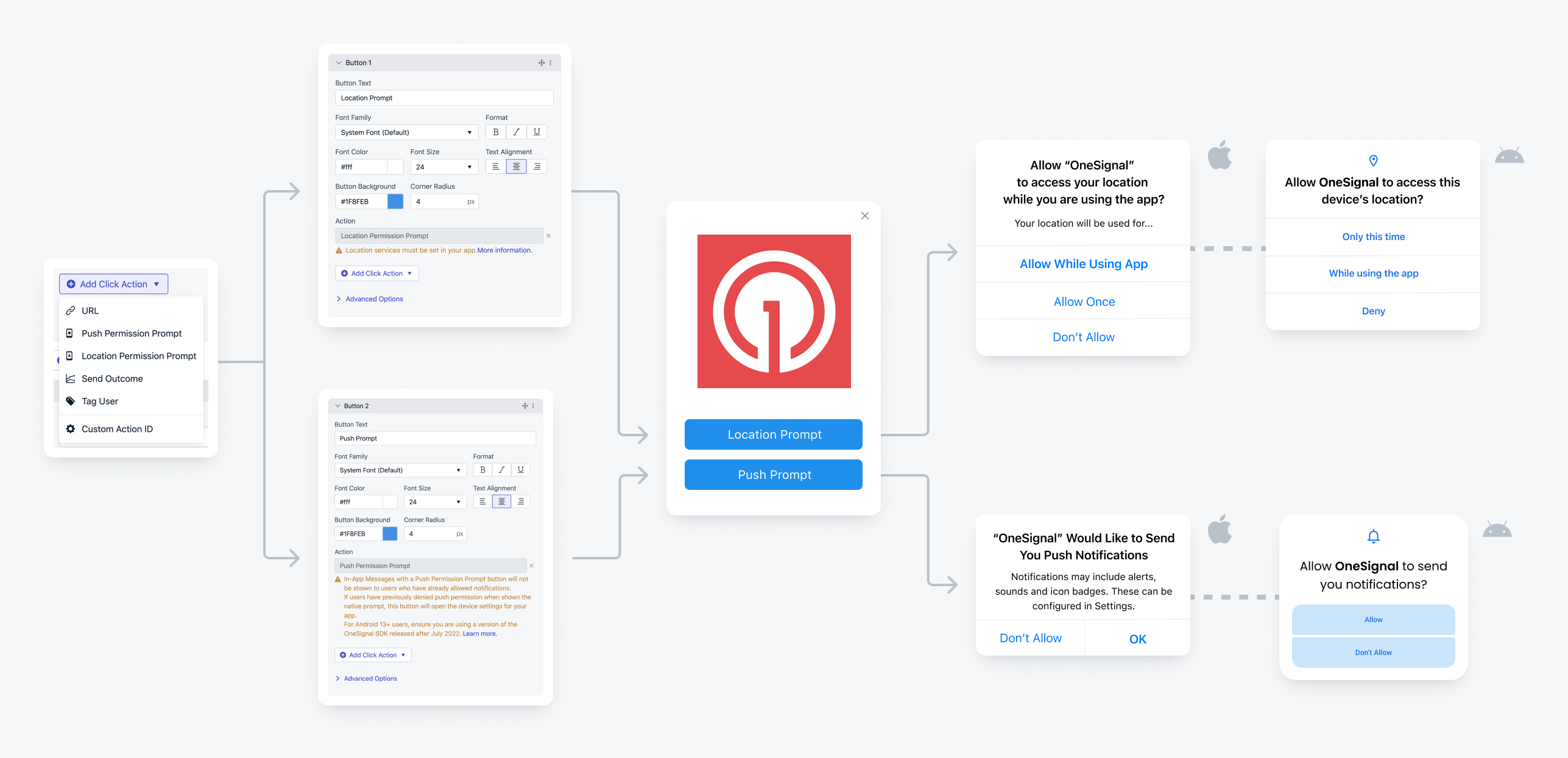
Image. Shows the flow of using Click Actions to form Location and Push prompts for iOS
Click actions
Click Actions are specific events that can be added to in-app messages to make them more interactive. They can be added to blocks when using the drag-and-drop editor or to any element in the HTML editor (see In-app JavaScript API). Click actions include the following abilities:URL
Leaves the app and opens the default browser to the URL you specify. Maps to theopenUrl method when using the In-App JS Library.
Push permission prompt
Shows the native iOS or Android Push Permission Prompt.- If the iOS or Android device is currently subscribed, the In-App Message will not show.
- If the iOS or Android device is currently unsubscribed and has been prompted previously, it will show a native alert asking the user to enable push notifications in the app settings.
triggerPushPrompt method when using the In-App JS Library.
Location permission prompt
Shows the native operating system prompt to ask permission for location tracking. Requires location tracking permissions to be added to your app. See Location Opt-In Prompt for details on setup. Maps to thetriggerLocationPrompt method when using the In-App JS Library.
Send Outcome
Tracks user interaction for analytics purposes. Outcomes sent through In-App messages will show as “Unattributed” Outcomes and will set a Tag on the user in formatoutcome name : true. See Custom Outcomes for more details.
Maps to the sendOutcome method when using the In-App JS Library.
Tag user
Adds a Tag to the user to express interest and later segment into another group based on user response to send more targeted messaging. Maps to thetagUser method when using the In-App JS Library.
Custom Action ID
Pass a custom value that, when clicked, can be read within the app using the OneSignal SDK IAM Click Listener method Used for custom action handling like:- Click detection to perform custom event like send data to your own server or analytics vendor.
- Deep Linking within the app.
addClickName method when using the In-App JS Library.
How to collect custom click actions
When an Image or Button block is clicked, you can use the Custom Action ID and set a value to identify that block was clicked. This Action ID can then be detected through the OneSignal SDK IAM Click Listener method and that data can be sent to your server/date base/analytics vendor.Example: create a poll
Example: create a poll
Example: create a poll
If you want to survey your users with a multiple choice questionnaire and then display their choices within the app. You can setup the Action ID per button to be a unique identifier for that option. Whenever that option is clicked, it will be detected in the OneSignal SDK IAM Click Listener method. From there, you can make an API request to your server to store that data and access it within the app later to display to your users.How to deep link within the app
See Deep Linking for details.How to create a rating action
There are several ways to get reviews from your users. The simplest way is to use the URL click action to deep link directly to the App Store.- iOS: Apple’s documentation
- Android: Linking to Google Play